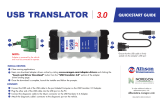UC864-G Hardware User Guide
DRAFT - 29/10/07
Reproduction forbidden without Telit Communications S.p.A. written authorization - All Rights Reserved page 4 of 66
10.2 General Design Rules ..........................................................................................................40
10.3 Other considerations ...........................................................................................................40
10.4 Microphone Biasing .............................................................................................................41
10.4.1 Balanced Microphone Biasing ....................................................................................................... 41
10.4.2 Unbalanced Microphone Biasing...................................................................................................42
10.5 Microphone Buffering ..........................................................................................................44
10.5.1 Buffered Balanced Mic................................................................................................................... 44
10.5.2 Buffered Unbalanced (Single Ended) Microphone ........................................................................ 46
11 OUTPUT LINES (Speaker)..............................................................................................49
11.1 Short description..................................................................................................................49
11.2 Output Lines Characteristics ..............................................................................................50
11.3 General Design Rules ..........................................................................................................51
11.3.1 Noise Filtering................................................................................................................................ 51
11.4 Handset Earphone Design...................................................................................................52
11.5 Hands-Free Earphone (Low Power) Design .......................................................................53
11.6 Car Kit Speakerphone Design .............................................................................................54
12 General Purpose I/O.......................................................................................................55
12.1 Logic level specifications ....................................................................................................56
12.2 Using a GPIO Pad as INPUT ................................................................................................57
12.3 Using a GPIO Pad as OUTPUT ............................................................................................57
12.4 Using the RFTXMON Output GPIO5....................................................................................57
12.5 Using the Alarm Output GPIO6 ...........................................................................................57
12.6 Using the Buzzer Output GPIO7..........................................................................................58
12.7 Indication of network service availability...........................................................................59
12.8 RTC Bypass out....................................................................................................................60
12.9 VAUX1 power output............................................................................................................60
13 DAC and ADC section....................................................................................................61
13.1 DAC Converter(TBD) ............................................................................................................61
13.1.1 Description..................................................................................................................................... 61
13.1.2 Enabling DAC ................................................................................................................................ 61
13.1.1 Low Pass Filter Example ............................................................................................................... 62
13.2 ADC Converter......................................................................................................................63
13.2.1 Description..................................................................................................................................... 63
13.2.2 Using ADC Converter .................................................................................................................... 63
13.3 Mounting UC864-G on your board ......................................................................................64
13.3.1 Debug of the UC864-G in production ............................................................................................ 65























